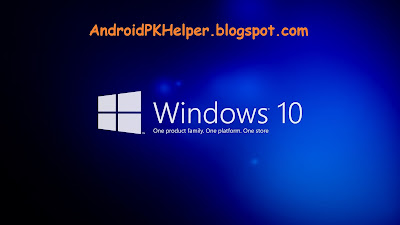Windows 10 2015 – The best Windows Version From Official Microsoft
Recently Microsoft has been released the final version of Microsoft Windows windows 10. If you not get it yet then download it from Windows 10 All Editions Now if you failed to boot it from CD / DVD then no need to worry. Here is simple guide to boot from USB flash drive. Booting Microsoft Windows from USB Flash Drive is more fast and safe than CD / DVD. So follow the given steps and start enjoying windows 10.
Using Rufus to create bootable USB Flash drive Microsoft Windows to install Windows 10 is very simple. Beside it’s the most recommended method since Rufus app is completely portable (doesn’t need to be installed on system) even Rufus completes the ISO burning process faster than any other app available on net.Let’s follow the step by step instructions below.
Method:
Run Rufus as admin.Make all the settings same as the below image.
Now click on the DVD icon and select your Windows 10 ISO file.
After all click on Start button.
It will take few minuets to complete booting the process. Then it is ready to boot your PC in Windows 10.The process was so simple and yes it is done.You may be thinking that might it work or not because it is so small process but it will work without any kind of issue.
Screenshots
Requirements for this Process :
Get Windows 10 ISO file – Click Here
Rufus – It helps to create bootable flash drive – Download this Software Click Here
USB Flash Drive/Pen Drive – minimum 8GB capacity.
Please Plus 1 us!
Introduction to Windows 10
Windows 10 is a personal computer operating system released by Microsoft as part of the Windows NT family of operating systems. Officially unveiled in September 2014 following a brief demo at Build 2014, the operating system entered a public beta testing process in October 2014, leading up to and continuing through the consumer release of Windows 10 on 29 July 2015,[3] and its release to volume licensing on 1 August 2015. To encourage its adoption, Microsoft announced that during its first year of availability, Windows 10 would be made available free of charge to users of genuine copies of eligible editions of Windows 7 or Windows 8.1.
Windows 10 introduces what Microsoft described as a "universal" application architecture; expanding on Metro-style apps, these apps can be designed to run across multiple Microsoft product families with nearly identical code—including PCs, tablets, smartphones, embedded systems, Xbox One, Surface Hub and HoloLens. Windows 10's user interface was revised to handle transitions between a mouse-oriented interface and a touchscreen-optimized interface based on available input devices—particularly on laplets; both interfaces include an updated Start menu that comprises a design similar to Windows 7 with 8's tiles. Windows 10 also introduces Task View, a virtual desktop system, the Microsoft Edge web browser and other new or updated applications, integrated support for fingerprint and face recognition login, new security features for enterprise environments, DirectX 12 and WDDM 2.0 to improve the operating system's graphics capabilities for games.
Microsoft described Windows 10 as an 'operating system as a service' that would receive ongoing updates to its features and functionality, augmented with the ability for enterprise environments to receive non-critical updates at a slower pace, or use long-term support milestones that will only receive critical updates, such as security patches, over their five-year lifespan of mainstream support. Terry Myerson, executive vice president of Microsoft's Windows and Devices Group, argued that the goal of this model was to reduce fragmentation across the Windows platform, as Microsoft aimed to have Windows 10 installed on at least one billion devices in the two to three years following its release.
Windows 10 received mostly positive reviews upon its original release in July 2015; critics praised Microsoft's decision to downplay user-interface mechanics introduced by Windows 8 (including the full screen apps and Start screen) in non-touch environments to provide a desktop-oriented interface in line with previous versions of Windows, although Windows 10's touch-oriented user interface mode was panned for containing regressions upon the touch-oriented interface of Windows 8. Critics also praised the improvements to Windows 10's bundled software over 8.1, as well as the capabilities of Cortana Search Engine and the replacement of Internet Explorer with Edge Application with Minimal Design—although the browser was criticized for being a work in progress that was not yet feature complete. Windows 10 was also criticized for limiting how users could control its operation; in particular, Windows Update installs all updates automatically, no longer allows users to selectively install updates, and only the Pro edition of Windows 10 can "defer" the installation of "upgrades" for the operating system. Privacy concerns were also voiced by critics and advocates, as the operating system's default settings and certain features require the transmission of user data to Microsoft or its partners.



EmoticonEmoticon